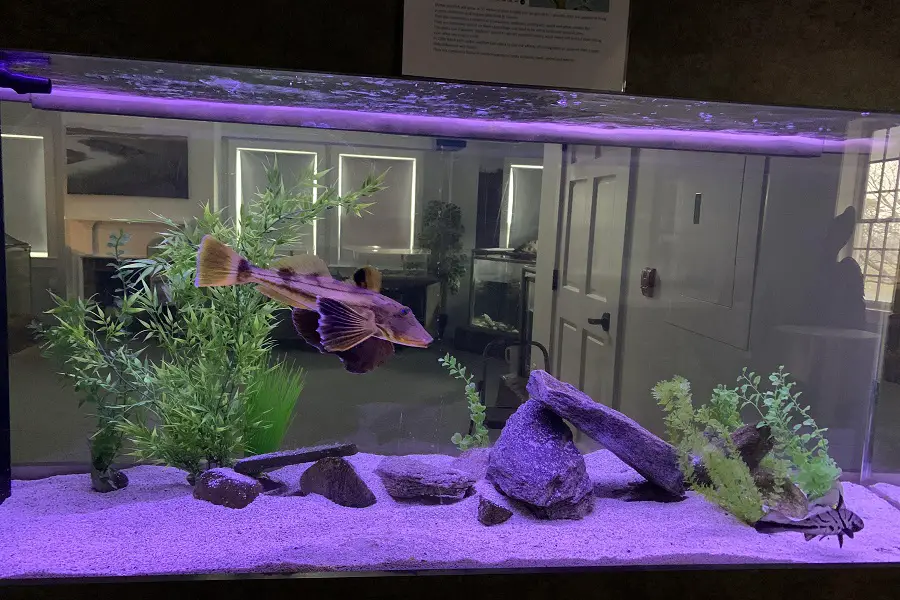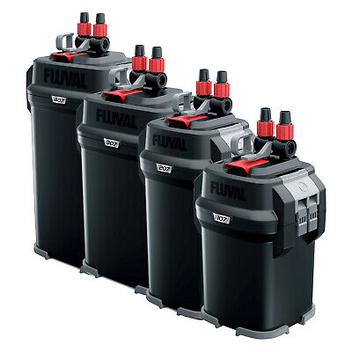Ultimate Guide: Types of Aquarium Filters for Fish Tanks
There are four main types of aquarium filters for fish tanks: mechanical, chemical, biological, and combination. Aquarium filters are essential for maintaining a healthy environment for your fish by removing excess waste and maintaining the water’s chemical balance.
Mechanical filters physically remove debris and waste particles, while chemical filters use activated carbon to remove toxins and impurities from the water. Biological filters depend on beneficial bacteria to break down harmful substances, and combination filters combine various filter types to maximize effectiveness.
Choosing the right filter for your aquarium depends on factors such as tank size, fish species, and budget. In this article, we will explore the different types of aquarium filters in-depth to help you make an informed decision.

Credit: aquariumia.com
Understanding Aquarium Filters
What Are Aquarium Filters?
Aquarium filters are devices that clean water in fish tanks, which is essential for the health of the fish. Filters remove waste, chemicals, and debris from water, allowing it to be safely reused in the tank.
Why Do You Need An Aquarium Filter?
Filters are necessary for maintaining a stable environment in fish tanks. Without a filter, water quality rapidly deteriorates, creating a hazardous environment for fish. An aquarium filter ensures that water in the tank is clean and clear, which helps to prevent the growth of algae and bacterial infections in fish.
The following are the reasons why you need an aquarium filter:
- Eliminates toxins, waste, debris, and uneaten food that may cause harm to fish
- Reduces the need for frequent water changes
- Promotes the growth of healthy bacteria that help to break down waste in the tank
- Keeps water in the tank clean and clear, which is essential for the overall health of fish
The Science Behind How Aquarium Filters Work
Aquarium filters are designed to remove three types of waste: solid particles, dissolved organic matter, and dissolved inorganic matter.
The following is an explanation of how aquarium filters work:
- A mechanical filter traps larger debris, such as uneaten food and fish waste.
- A biological filter contains media that allow beneficial bacteria to thrive. These bacteria break down the organic matter, transforming it into less harmful substances.
- A chemical filter removes dissolved wastes from the water, utilizing activated carbon which filters the water through the carbon.
Overall, aquarium filters provide a safe, clean environment for fish to thrive in. It is crucial to choose the right aquarium filter that is suitable for the tank size and fish population. Regular inspection and maintenance of the filter improve its performance and ensure a healthy environment for your aquatic pets.
Types Of Aquarium Filters
Aquarium filters play a crucial role in maintaining a healthy environment for your fish. They effectively clean the water and remove harmful toxins, ensuring your aquatic pets live in a safe and comfortable habitat. We’ll explore the different types of aquarium filters you can use in your fish tank.
Hang-On-Back (Hob) Filters
Hang-on-back filters, also known as hob filters, are the most common type of filter used in fish tanks. These filters are mounted on the back of the aquarium and draw water up through a tube. The water then passes through a filter media, removing impurities and debris.
Here are some key points about hob filters:
- Easy to install and maintain
- Suitable for smaller tanks
- Lacks biological filtration
- Has a limited flow rate
Canister Filters
Canister filters are another popular type of aquarium filter. They’re larger than hob filters and are placed outside of the aquarium. Canister filters push water through a series of filter media, including mechanical, chemical, and biological filtration. Here are some key points about canister filters:
- Suitable for larger tanks
- Provides superior filtration
- Requires more maintenance than hob filters
- Needs a high flow rate to function correctly
Sponge Filters
Sponge filters are an affordable solution that’s excellent for small tanks and breeding setups. As the name suggests, these filters use a sponge to trap debris and waste. The sponge also acts as a biological filter, providing places for beneficial bacteria to grow.
Here are some key points about sponge filters:
- Affordable and easy to use
- Great for small tanks and breeding setups
- Limited mechanical filtration
- Low flow rate
Protein Skimmers
Protein skimmers are not filters in the traditional sense but work in tandem with other filters. They remove proteins and other organic compounds before they can break down, leading to reduced waste accumulation. These are some things to consider when using protein skimmers:
- People use them primarily in saltwater aquariums.
- Protein skimmers do an excellent job of removing waste materials
- Expensive to purchase and maintain
Now that you understand the different types of aquarium filters, you can select one that’s suitable for your fish and aquarium setup. Ensure you choose a filter that can handle the size of your aquarium to keep your fish healthy and happy.
How To Choose The Right Aquarium Filter
Whether you’re a beginner or an experienced aquarist, choosing the right aquarium filter for your fish tank can be a daunting and confusing task. With so many different types of aquarium filters available in the market, it’s important to understand their unique functions and features to make the best choice.
In this blog post, we’ll discuss the key factors to consider when choosing an aquarium filter, common mistakes to avoid, and tips for maintaining your aquarium filter for optimum performance.
Factors To Consider When Choosing An Aquarium Filter
Choosing the right aquarium filter for your fish tank is crucial for maintaining a healthy aquatic environment. Here are some key factors to consider before making a decision:
- Tank size: The size of your aquarium is an essential factor to consider when choosing a filter. A filter that is too small for your tank can lead to poor water quality and cloudy water, whereas an oversized filter can create excessive water flow and agitation, which may stress out your fish. Make sure to match your filter size with your tank size, as recommended by the manufacturer.
- Filtration type: There are three types of filtration: mechanical, chemical, and biological. Mechanical filtration removes physical debris from the water, chemical filtration removes impurities using activated carbon, and biological filtration utilizes bacteria to break down harmful waste. Most filters combine two or more of these filtration types for optimal water quality.
- Flow rate: The flow rate of your filter determines how quickly the water circulates through the filter media. A filter with a high flow rate is suitable for heavy waste-producing tanks, whereas a low flow rate filter is recommended for delicate aquatic environments.
- Noise level: If you’re keeping the fish tank in your home, noise level is an important factor to consider. Some filters can be noisy and disruptive, while others operate silently. Choose a filter that is appropriate for your preference and living environment.
Common Mistakes To Avoid When Choosing An Aquarium Filter
Here are some of the common mistakes to avoid when selecting an aquarium filter:
- Not considering the tank size: As mentioned earlier, choosing a filter that is too small or too large for your tank can lead to problems with water quality and fish health.
- Diy filters: While diy projects can be fun and rewarding, it’s not recommended to create your own filter unless you’re experienced and knowledgeable about aquarium filtration. A poorly designed diy filter can be dangerous and harmful for your fish.
- Not researching: Choosing a filter without proper research or asking for recommendations from experienced aquarists can lead to unsatisfactory results. Take your time to read reviews, research brands, and compare features before committing to a purchase.
Tips On Maintaining Your Aquarium Filter For Optimum Performance
Regular maintenance of your aquarium filter is essential for optimal performance and longevity. Here are some tips to keep your filter in top condition:
- Clean your filter regularly: Mechanical filters need to be cleaned frequently, ideally every two weeks. Chemical and biological filters don’t require cleaning as frequently, but make sure to follow the manufacturer’s recommendations.
- Replace filter media: Over time, filter media can become clogged with debris and lose their effectiveness. Replace your filter media as recommended by the manufacturer.
- Check the flow rate: Make sure to periodically check the flow rate of your filter to ensure that water is circulating through the filter media correctly.
- Don’t replace the whole filter: If your filter is not functioning correctly, don’t replace the entire unit. Instead, try to troubleshoot the problem or replace individual parts.
Choosing the right aquarium filter for your fish tank is a critical decision that impacts the overall health and well-being of your aquatic pets. By factoring in tank size, filtration type, flow rate, and noise level, you can make an informed decision and avoid common mistakes.
With regular maintenance and care, your aquarium filter will provide optimal performance and a healthy environment for your fish.
Frequently Asked Questions For What Are The Different Types Of Aquarium Filters For Fish Tanks
What Are The Different Types Of Aquarium Filters?
There are several types of aquarium filters, including hang-on-back filters, canister filters, sponge filters, and internal filters. Each type of filter has its own advantages and disadvantages.
What Is A Hang-On-Back Filter?
A hang-on-back filter, also known as a power filter, is an aquarium filter that hangs on the back of a fish tank. It uses a siphon to draw water from the tank, through the filter media, and back into the tank.
What Is A Canister Filter?
A canister filter is an aquarium filter that sits outside of the fish tank and uses a pump to draw water from the tank, through the filter media, and back into the tank. They have more filter media and can handle larger aquariums.
What Is A Sponge Filter?
A sponge filter is a simple and inexpensive type of aquarium filter that uses an air-driven pump to draw water through a sponge. It’s best used for smaller aquariums or as a backup filter.
What Is An Internal Filter?
An internal filter is a type of aquarium filter that sits inside the fish tank. It uses a pump to draw water through the filter media, cleaning and returning the water to the tank. It’s ideal for smaller aquariums and low-flow aquariums.
Conclusion
With so many options for aquarium filters, it can be difficult to choose the right one for your fish tank. Each type of filter offers its own unique benefits and drawbacks, so it’s important to consider your specific needs when making a decision.
Canister filters are great for larger tanks or heavily stocked tanks, while hang-on-back filters are ideal for smaller tanks. If you’re looking for something that cleans your tank without taking up too much space, sponge filters are a good option.
However, if you want the most efficient filtration possible, a power filter will get the job done. No matter which type of filter you choose, regular maintenance is crucial to keep your tank clean and your fish happy and healthy.
With the right filter and care, you can enjoy a thriving fish tank for years to come.






